Recent Articles
Popular Makes
Body Types
2017 Subaru BRZ Road Test and Review
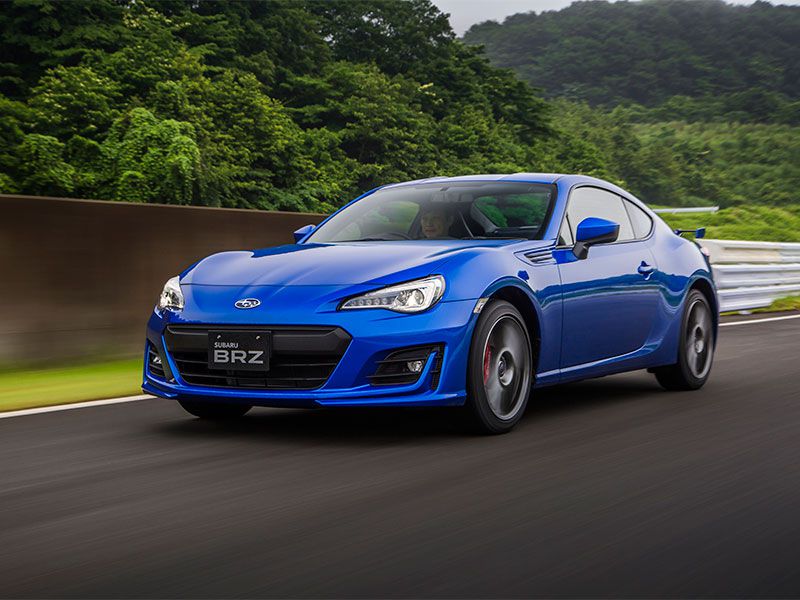
2017 Subaru BRZ on road ・ Photo by Subaru
The BRZ is one of the more interesting cars in Subaru's lineup, because it's not really a Subaru—except that it's totally a Subaru. Subaru is best known for their weather-conquering all-wheel drive cars and SUVs, so what on Earth are they doing with a low-slung rear-wheel drive sports car in their lineup? The answer is Toyota, which has a large stake in Subaru's parent company, Fuji Heavy Industries. Toyota wanted a modestly-powered sports car for their Scion brand that would be a spiritual successor to the AE86 Corolla, a car they built in the mid-'80s that has become an enthusiast favorite. Rather than engineer it themselves, they turned to Subaru for a good deal of the heavy lifting—and what a smart move that was. Subaru's specialty may be all-wheel drive, but they did a brilliant job designing the Scion FR-S—and they kept a version for themselves, the Subaru BRZ. The BRZ may have its roots as a Toyota, but anyone familiar with Subaru cars will recognize that brand's handiwork.
Scion and Subaru
Subaru introduced the BRZ for the 2013 model year, and visually it was nearly identical to the Scion FR-S. There were a few differences in styling and option availability; Scion sold a single model of the FR-S, while Subaru sells the BRZ in two trim levels. The two cars were also tuned for different handling characteristics, something we'll talk more about soon. For the 2017 model year, Toyota closed up the Scion brand and renamed their version Toyota 86, making a few changes to styling, engine and suspension. Subaru did the same for the 2017 BRZ. The horizontally-opposed engine (also known as a “flat four”, a layout favored by Subaru and Porsche) gets new heads, valves, camshafts and manifolds, and power output is increased slightly for manual-transmission models to 205-horsepower and 156 lb-ft. Automatics retain their old power output of 200 horsepower and 151 lb-ft. Manual BRZs also get revised rear-end gearing to improve acceleration.
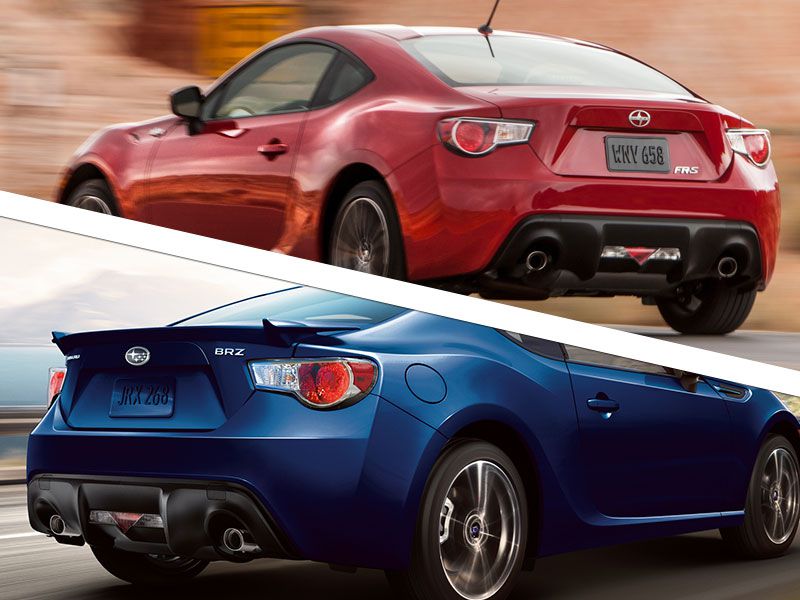
Photo by Subaru and Toyota
A different kind of sports car.
If your idea of a sports car is one that can blast from stoplight to stoplight in record time, the BRZ might not be your car. Not that it's slow, though a lot of people say it is—while it's not as quick as 6-cylinder sports cars, the BRZ can certainly get out of its own way. It's just that power is not what the BRZ does best: This car is all about handling. And again, if your idea of handling is getting around a corner as quickly as possible with as little drama as possible, the BRZ might not be right for you. The BRZ is designed to exacerbate the best traits of rear-wheel drive, and that includes breaking the tires loose from the pavement and correcting the car's resulting behavior.
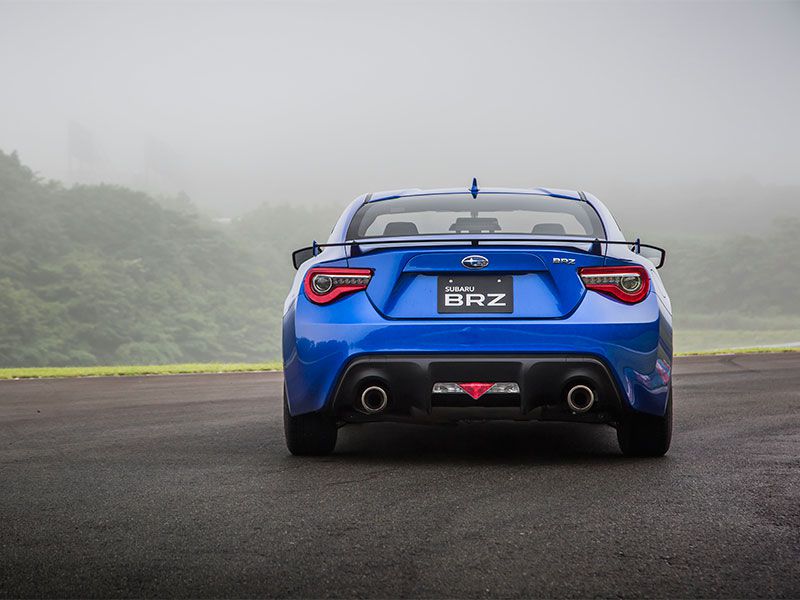
Photo by Subaru
What sets the BRZ apart?
Most cars are set up to understeer—when they lose traction, they try to go straight ahead—a situation from which it is relatively easy to recover. (Take your foot off the gas, which is a natural reaction, and weight is transferred to the front wheels, helping them to regain grip.) The BRZ will oversteer, meaning it will break loose from the back end, which requires corrective steering and use of the accelerator to shift weight to the rear wheels. (Lifting and braking will usually make things worse.) Now, we don't mean to imply that the BRZ is some sort of fishtailing death-trap that will fling you, back-end first, off a cliff: Like every car today, the BRZ has electronic stability control, which can help avoid such shenanigans. Subaru has equipped the BRZ with a Track mode that allows a bit more oversteer while still stepping in, if things get too far out of hand.
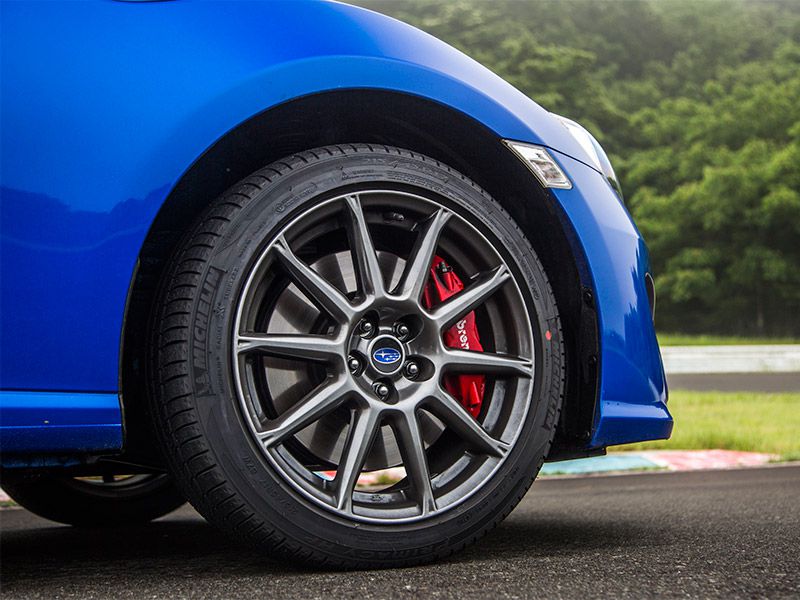
Trading Places
When the BRZ and the FR-S first came out, the FR-S was the more tail-happy of the two cars. It was easy to coax it into oversteer, even at moderate speeds, while the BRZ kept itself a bit more buttoned down. While some people preferred the FR-S—particularly those of us who saw the car as a rolling classroom—others liked the greater stability of the Subaru. Toyota (Scion) tightened up their version of the car for the 2015 model year, but now both have been retuned for 2017, and they seem to have changed places. The BRZ is the more tail-happy car, while the Toyota 86 tends to stay pointed in a given direction at higher speeds. Personally, I think the BRZ is better; I like that you can play with the car's handling characteristics at lower speeds (after all, if you want maximum cornering grip, get an all-wheel driver like the Subaru WRX). But the BRZ's newfound playfulness can take you by surprise, so if you're looking for cornering speed over driving style, the Toyota 86 might make you happier.
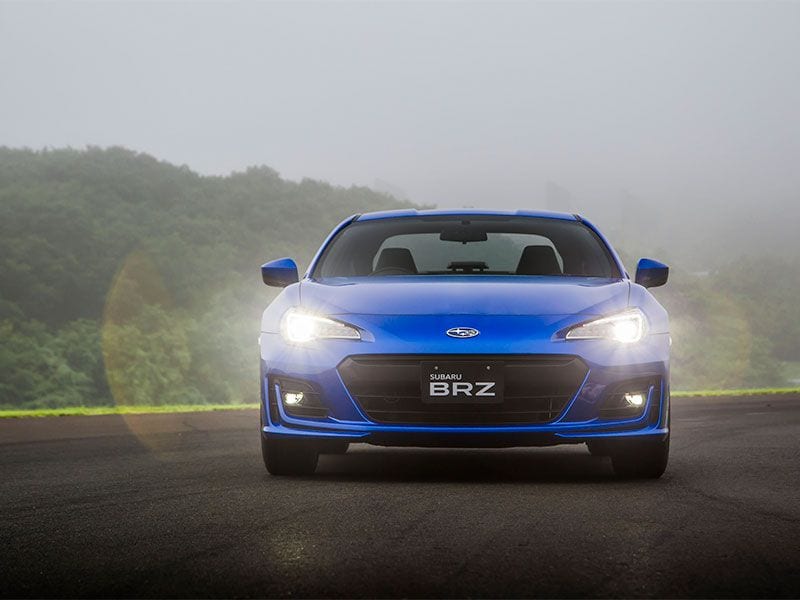
Photo by Subaru
“So what?”
By now you may well be asking, “Oversteer? Why in blazes would I want to do that?” Lots of reasons. The inspriation for the FRS/86/BRZ is a form of racing called drifting, in which the car is almost constantly oversteering to the point that it's pretty much driven sideways. Drivers are awarded points based on style rather than speed. Now, we would never recommend such shenanigans on public roads (it's simply not safe to have the butt-end of your car hanging out over the double yellow line, lest you bang it into that Ford Explorer full of nuns coming in the opposite direction). But the BRZ is great for autocrossing, a type of amateur racing primarily done in parking lots. Autocrossing features sharp curves that bring cars to their handling limits at relatively low speeds, and a car like the BRZ is an autocrosser's dream—you can experience the full gamut of handling dynamics and learn a lot of valuable skills. Few cars have so much to teach their owners as the Subaru BRZ.
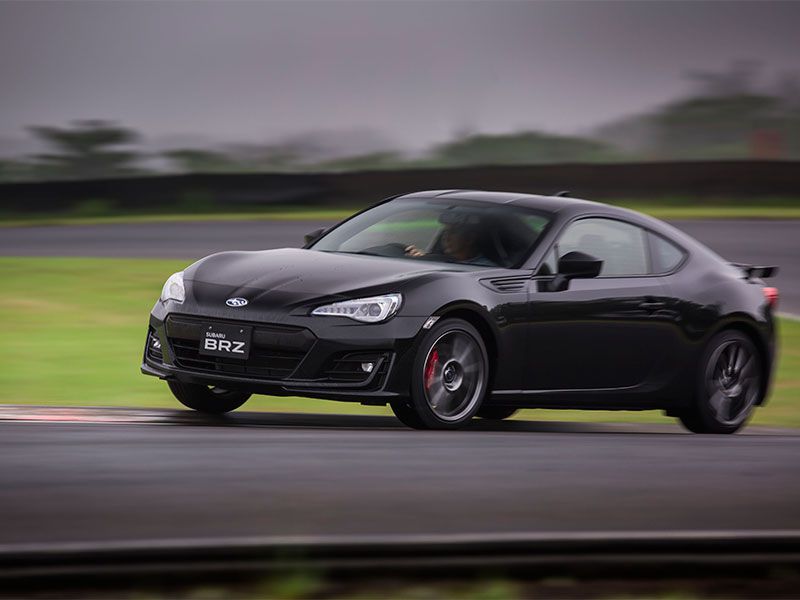
Photo by Subaru
Would you want to live with one?
Gosh, I've talked so much about the way the Subaru handles that I haven't told you much about the practical aspects of the car, limited though they may be. I'm a big fan of the cabin, which is classic Subaru: Though a bit dark (only a black interior is offered, and there's no option for a sunroof) it's well designed with simple controls and easy-to-read gauges, supplemented this year with a color LCD display next to the center-mounted tachometer. (The speedometer lives off to one side; when racing, engine speed is more important than car speed.)
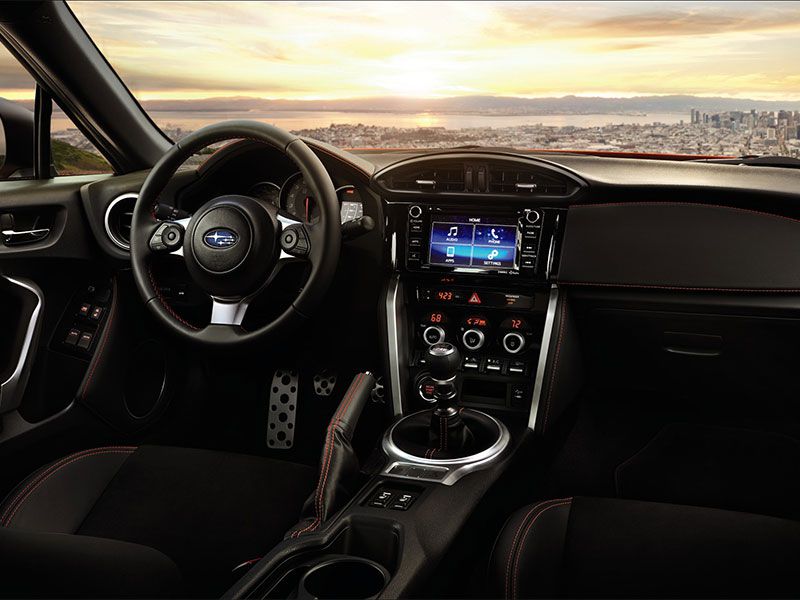
Photo by Subaru
Think of it as a coupe.
The seats are low and deeply contoured, but the BRZ isn't as difficult to get in and out of as some sports cars. The BRZ has a back seat, but its primary purpose is to lower the car's insurance rates rather than actually move people. Short adults can get back there; I'm 5'6” and did once ride in the back seat of a friend's BRZ. That was two years ago, and I've only recently put the experience far enough behind me to start speaking to him again. A far better use for the back seat is to fold it down, expanding the BRZ's meager trunk. It's best to think of this as a car for one or two.
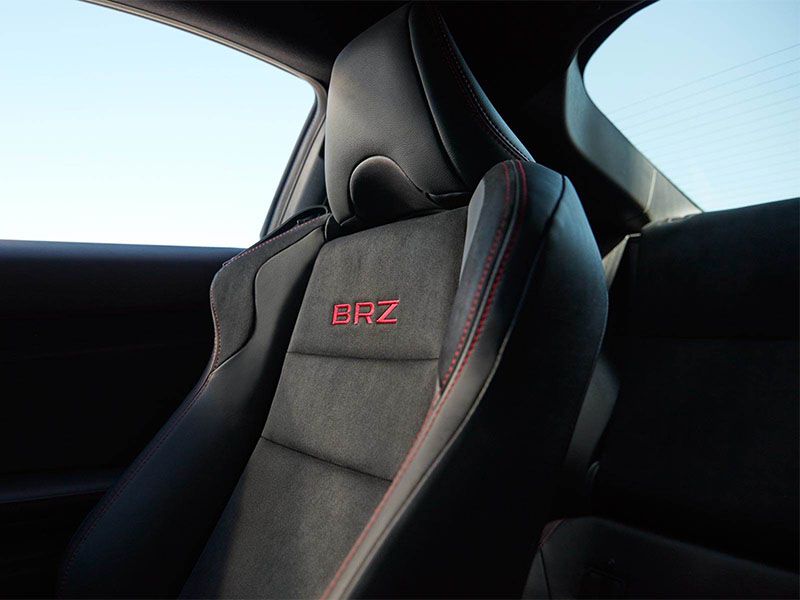
Photo by Subaru
A sports car you can live with.
Outside of the racetrack or the autocross course, the BRZ is fairly pleasant as far as sports cars go: It's noisy and the ride is hard, but driving it is certainly not intolerable. It's no surprise that a relatively high percentage of BRZs sell with a manual transmission, and I doubt anyone who goes for that option will regret their decision. The BRZ's clutch is relatively light and the shifter feels great. But as I have said about the BRZ's sister car, the Toyota 86, don't rule out the automatic. It is slower (especially now that manual transmission cars get more power and better gearing), but in my opinion, it really doesn't detract from the fun. For one thing, the programming on the automatic transmission is excellent. It recognizes curvy roads and fast driving and downshifts aggressively, “blipping” the throttle during downshifts to ensure smooth changes. And if the transmission isn't quick enough for you, you can always use the paddle shifters. Remember, the BRZ is all about mastering its handling abilities. Clutching and shifting take significant attention to do right, as jerky shifts can throw off the handling balance. With the automatic doing the work, you can concentrate on mastering your cornering technique.
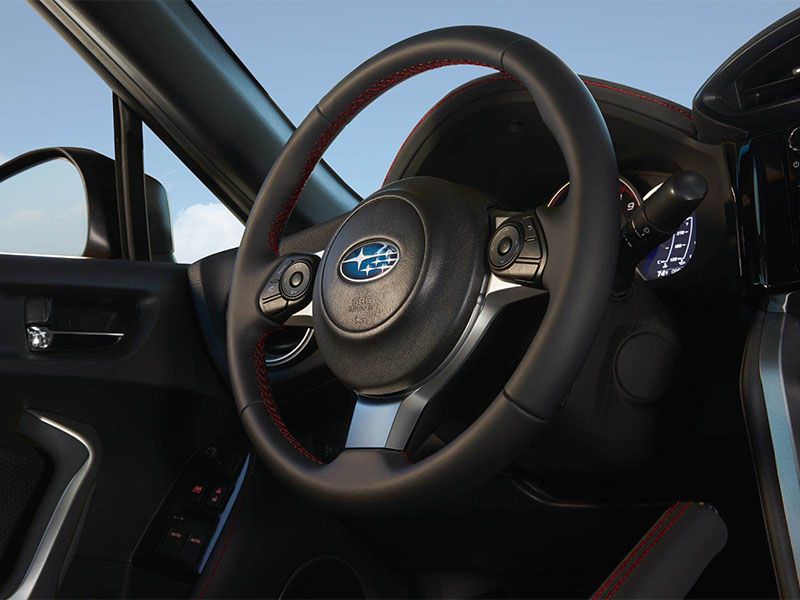
Photo by Subaru
I'll take the BRZ, please.
There's really only one car to which the BRZ can be compared, and that's the Toyota 86. Sure, there are other afforable sports coupes, like the Nissan 370Z and the Chevrolet Camaro. Both are great cars, but they don't let you explore their handling characteristics at slower, more sane speeds. The two real competitors that come to mind are the Mazda MX-5 Miata and the mechanically-similar Fiat 124; these are 2-seat convertibles, which puts them into a different class, but they have much of the same appeal as the BRZ. The Toyota 86 comes in a single trim level, and it's priced higher than the BRZ. The BRZ offers two models; the base car, called the Premium and priced at $26,315 (including an $820 destination fee), undercuts the Toyota 86 by about $800, while the $28,465 BRZ Limited offers features that can't be had in the Toyota, such as leather upholstery and dual-zone climate control. Personally, if choosing between the two, I'd pick based on the handling characteristics you prefer—and I can say for sure that my choice would be the Subaru BRZ.
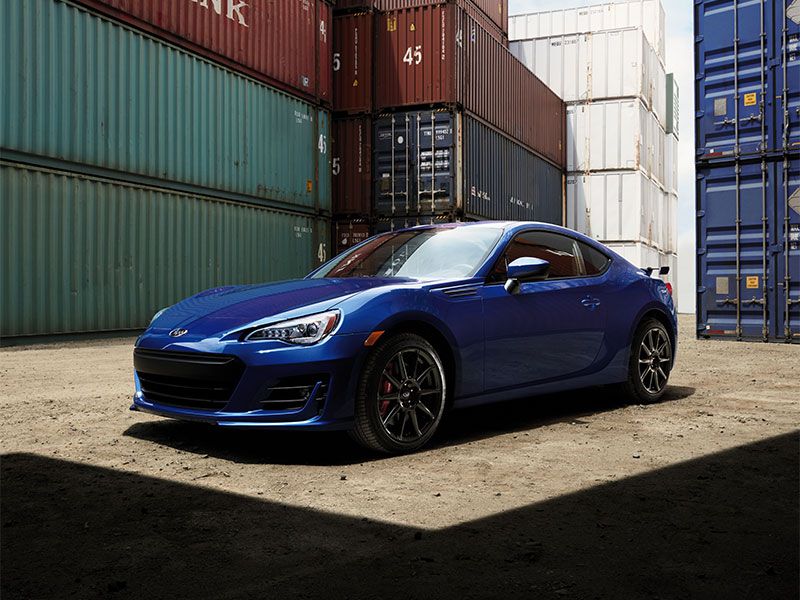
Photo by Subaru